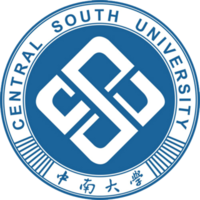近日,课题组与中南大学材料科学与工程学院何勇菊副教授实验室合作研究成果发表在Journal of Materials Chemistry C上。
论文题目:
Visualizing Ultrasmall Silica-CTAB Hybrid Nanoparticle for Generating High Photoluminescence
作者信息:Yongju He, Chuancun Shu*, Yu Guo, Mengqiu Long*, Hui Xu
论文摘要:Generating photoluminescence (PL) materials with high quantum yield and excellent stability has been a long-standing goal in the fields of materials and chemistry. However, it remains a challenging task to synthesize ultrasmall PL particles and to visualize the underlying physical mechanism of synthesis. Here, we report a synthesized spherical silica-CTAB hybrid nanoparticle (SCHN) with a mean diameter of around 12 nm, which can exhibit a high PL quantum yield of up to 41.8 % and long PL lifetime of up to ten microseconds under 365 nm excitation. We examine the stability of SCHN, which do not diminish after exposure to an ambient environment longer than 12 months and do not bleach after 365 nm UV irradiation longer than 48 hours. The emission maximum of such SCHN is greatly enhanced as compared with that for CTAB. We propose a collective-state model via dipole-dipole interactions to gain insights into these exciting phenomena. By identifying four critical intramolecular processes within the model, we reproduce the PL decay traces of SCHN upon 365 nm excitation with high quality. This work provides a new type of inorganic-organic hybrid PL nanoparticle by using the commonly used CTAB as the primary raw material.
论文链接:https://pubs.rsc.org/en/content/articlelanding/2020/tc/d0tc00797h/unauth#!divAbstract
The Journal of Materials Chemistry C is a weekly peer-reviewed scientific journal covering the properties, applications, and synthesis of new materials related to optical, magnetic and electronic devices. It is one of the three journals created from the splitting of Journal of Materials Chemistry at the end of 2012. Impact factor: 6.641 (2018)
